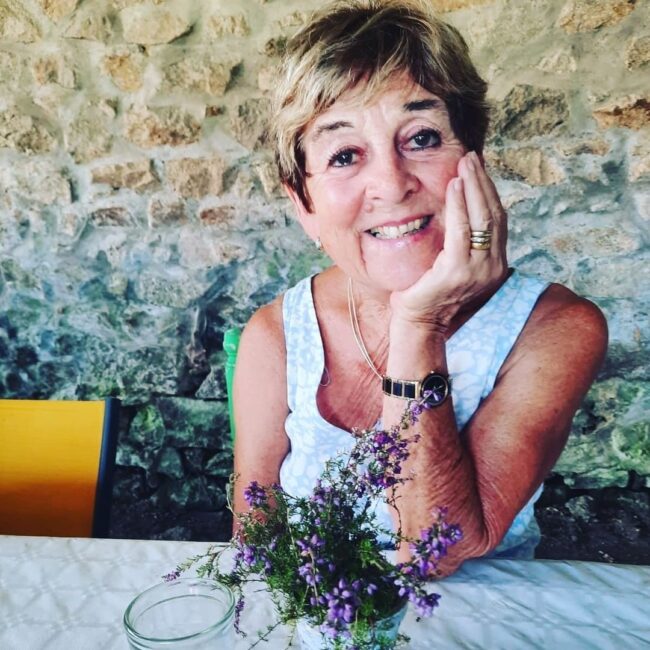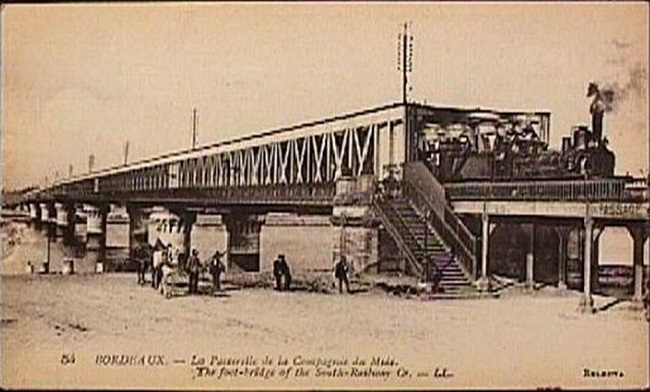A Colossus, a Genius and an Icon: The Eiffel Tower and the Olympics


- SUBSCRIBE
- ALREADY SUBSCRIBED?
BECOME A BONJOUR PARIS MEMBER
Gain full access to our collection of over 5,000 articles and bring the City of Light into your life. Just 60 USD per year.
Find out why you should become a member here.
Sign in
Fill in your credentials below.
On Easter Monday, the 6th of April, 1896, seven years after the completion of the Eiffel Tower, Pierre de Coubertin realized his dream of resurrecting the Olympic Games, a legendary tradition that had disappeared for over 15 centuries. As a gesture of respect to the ancient games held long ago in Olympia to honor Zeus, the king of Greek gods, the first modern Olympic Games were held in Athens, which had become the capital of the recently established Greek nation. Since then, France has hosted the Olympic Games five times.
This year, the sixth will be held in Paris, against the dominant backdrop of the Eiffel Tower. For the opening ceremony, the different national teams will sail spectacularly down the River Seine to disembark opposite this quintessential symbol of French culture. As tourists scatter around the foot of the Herculean structure, heads tipped back to gaze up into its intricate framework, I am reminded of Shakespeare’s description of Caesar standing astride the world, “like a Colossus,” while ordinary men “walk under his huge legs and peep about.”

Colossus of Rhodes, artist’s impression, 1880. Woodcut by Sidney Barclay, digitized via Google/Wikimedia Commons
If anything reflected a culture, it was the Colossus of Rhodes. One of the Seven Wonders of the World, it was constructed from iron and bronze, and was dedicated to the sun-god Helios, the patron god of Rhodes. It was honored by the Panhellenic games, of which the ancient Olympics was one of four sporting events held at different venues in Ancient Greece.
It is believed that centuries after it was destroyed in an earthquake, the metal used in its construction was melted down and used in coins, foreshadowing the use of discarded metal from France’s very own Wonder of the Modern World being used in the 2024 Paris Olympic medals. One of the many myths attached to the Colossus is that it held a torch, much like the Statue of Liberty, whose iron framework happened to be designed and engineered by Gustave Eiffel. The Statue, sometimes known as the Modern Colossus, and the Tower, raise their creator to mythical proportions.
And this year will see the Eiffel Tower, representing everything French, standing astride the Olympic Games.

The Olympics medals contain a piece of original metal from the Eiffel Tower. © Paris 2024.
The constructions of France’s own Colossus, Gustave Eiffel, truly do span the world. A legend of his time, more of a David than a Goliath, standing at just over 165 cm, he was one of the most important people of the 19th and 20th centuries. Born in Dijon on December 15th, 1832 as Alexander Gustave Bonickhausen, he did not adopt the name Eiffel until 1880, in honor of the Eiffel mountains, the area from which his family came. By this time, like the mountains of his ancestors, he was reaching for the stars.
As a tribute to the accomplishments of this mental giant, pieces of metal from the Eiffel Tower, which were removed and stored during renovation, have been incorporated into the Olympic medals. An Eiffel Tower image is featured in the scene on the reverse side. By integrating this historic iron into the medals, Paris 2024 celebrates athletic excellence and pays homage to a piece of French heritage. The medals honor both Gustave Eiffel and another icon of the age, Baron Pierre de Coubertin, the French genius of sport, founder of the modern Olympic games.

Photo of Gustave Eiffel by Nadar, 1888. Wikimedia Commons
As Eiffel’s contemporary, Coubertin was one of the last people to visit the Tower during its construction before it opened to the public on May 15th, 1889. As the World Fair’s main attraction it stunned the world. Baron De Coubertin was among the 32 million visitors attracted to the Expo. There to present a congress on physical education, he was inspired by the Fair’s ceremonies, exhibits, congresses and cultural performances.
Five years later he incorporated the experience into his concept of an international festival of sport. Born an aristocrat, Coubertin became a champion of the common man and the indisputable intellectual leader of the Olympic Movement, which owes its existence to his single-minded vision and determination. From the beginning he adopted the Ancient Greek Games and their underlying ideals as the main inspiration for his Olympic revival, believing strongly in the social and educational importance of sport. Despite being constantly sidelined, encountering fierce opposition, professional jealousy and an endless struggle that would drain his finances, he persevered.

The International Olympic Committee in 1896. Pierre de Coubertin is the 4th standing figure from the right. Public domain
His private life was beset by tragedy, but he kept it to himself. A year before the outbreak of World War II, he died alone while out on his daily walk, still worrying about his family’s future. Recognition came too late as the French, the Swiss and the Greeks, briefly putting aside petty quarrels, all held memorials for him in March 1938. The Greeks took his heart and encased it in a column erected in his honor in ancient Olympia. His mind was that of a determined, gentle giant, whose spirit has continued to watch over his dream of, in his own words, “an Olympic idea which has traversed the mists of the ages like an all-powerful ray of sunlight” – uniting the world in friendship and peace through sport. Eiffel’s Tower remained his lifelong touchstone.

Grave of Pierre de Coubertin. Photo: Nizar Kerkeni/Wikimedia Commons
A global symbol of architectural innovation, artistic beauty and engineering excellence, the Eiffel Tower stands proudly on the Paris skyline as a monument to the vision of its creator. Eiffel’s interest in aerodynamics led him to construct the first aerodynamic laboratory at its base, including the first wind-tunnel ever built. Awards such as the Queen Elizabeth Prize for Engineering, shared this year by two leading scientists, one Danish, the other British, as a recognition of their critical contributions to the development of wind power, owe much to Eiffel’s self-funded work on aerodynamics and study of wind turbines carried out in his laboratory. It was here that he devoted much of his later life to his research projects after suffering both professional and personal tragedy.

View of the Eiffel Tower and the Trocadéro during the Paris Universal Exhibition in 1900. Public domain
Eiffel’s wife Marguerite died in 1858 but he never remarried, focusing on his career and his five children. Paris, the City of Light, is synonymous with love and romance. A charming fairytale twist on how the Tower got its shape is proposed in the October 2021 film Eiffel. The film hints at a past romance being the influence behind the building of the Eiffel Tower, the centerpiece of the 1889 World Exhibition in Paris. It shows Eiffel as being reluctant to build something that would eventually be dismantled, preferring instead to focus on an underground railway. A chance meeting with a young woman from his past, Adrienne Bourges, to whom he had been engaged until her father withdrew his permission, changed his mind and he promised to build a tower 1,000 feet tall, made entirely of metal that would restore France’s global reputation. A lovely story, whose truth is shrouded in myth, the film suggests that the Tower’s cutting-edge shape incorporates the initial “A” in its construction, embodying everything French and romantic.
Whatever the truth, there is no doubt that Eiffel, who bequeathed many other monuments both to France and the world, is a Colossus of his time. He left his mark etched across five continents with more than 500 projects in 30 countries. Across the globe, people brush shoulders with his genius, unknowingly walking over or peering into his history. Neither Eiffel nor Coubertin were tall men, but their achievements make them giants between whose legs ordinary men can only wander and wonder. They were contemporaries, whom we can imagine sitting in Eiffel’s apartment at the top of the Tower, sharing their visions for a better, improved world.

The Bordeaux bridge, Eiffel’s first major work. Photo: Public Domain/Wikimedia Commons
Lead photo credit : The park fountains and Eiffel Tower seen from the Place du Trocadéro. Photo credit: Nick Loyless / Wikimedia commons
More in 2024 Olympics, Eiffel Tower, Gustave Eiffel, Olympics, Paris Olympics, Pierre de Coubertin, sport


